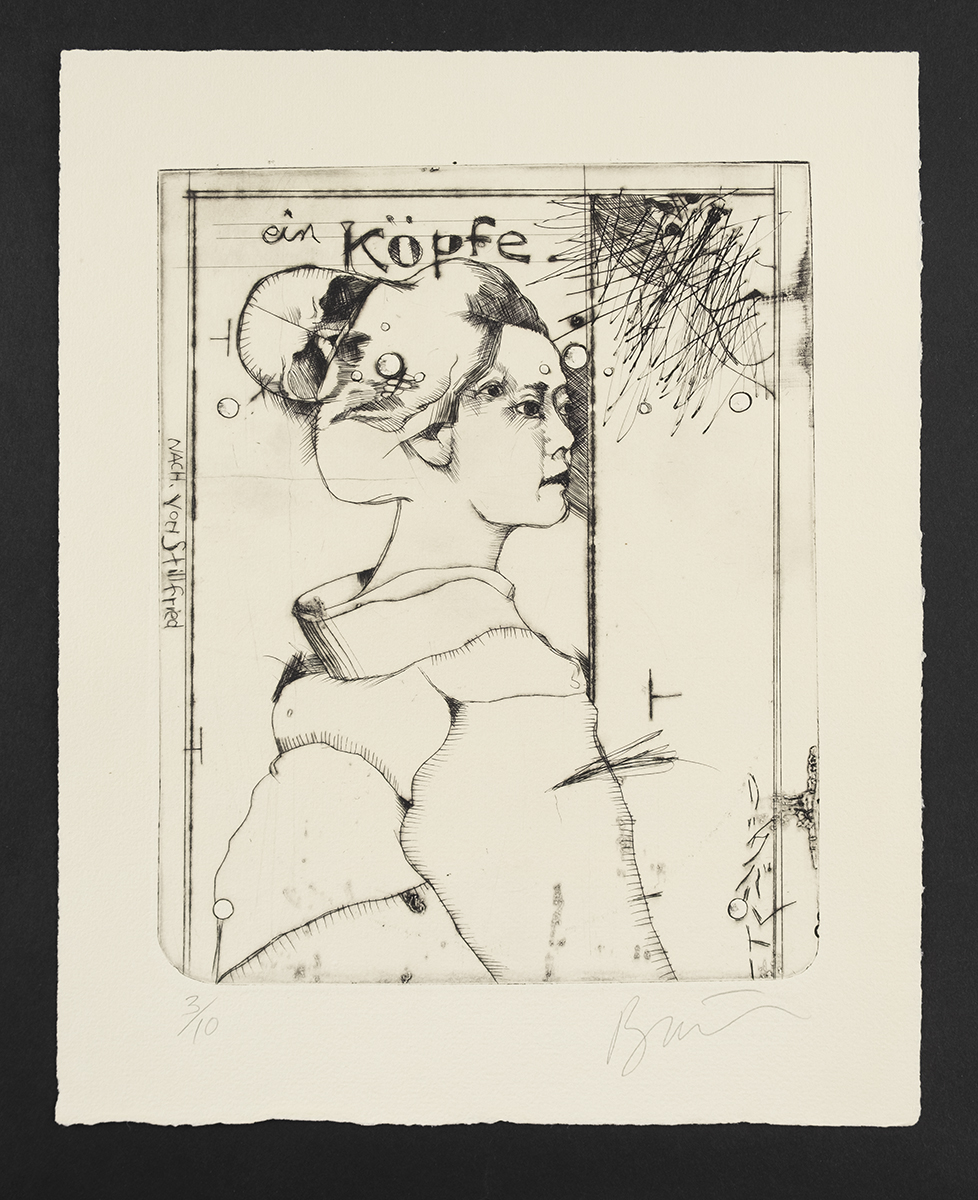Death and the Maiden
Published at Moon and Dog Press, with Master Printer Seiichi Hiroshima. South Beach, OR / Tokyo, Japan.
—
Death and the Maiden is a piece that exemplifies Bartow’s ability to pull imagery and meaning from various inspirations and experiences into a single image that radiates a haunting presence.
The style of drawing and German words in this drypoint was influenced by a friend and fellow artist of Bartow’s, Horst Janssen. Bartow met Janssen in Germany through Naoaki Sakamoto, a papermaker who provided Bartow with beautiful and delicate papers for his drypoints. Bartow and Janssen bonded over their shared experiences as veterans, similar artistic styles, and common subject matters of their work.
The word above the woman’s head reads “A Heads” in German, though, it should be noted that it is grammatically incorrect. The German words on the side of the print read “Nach. von Stillfried,” referencing the Australian explorer and photographer, Baron Raimund von Stillfried, who documented his trips in Japan via photographs in the 1870s.
In Death and the Maiden, Bartow connects his adventures and experiences to Japan and Germany in a single image. Bartow had a deep fascination and interest in Japanese themes and imagery after his first trip to Japan in 1994. Many Japanese themes reflect in Bartow’s drypoints as he made these pieces with collaborator and co-owner of Moon & Dog Press, Seiichi Hiroshima.
The meaning that is etched into this piece is that death and loss are always lurking around the corner and one may never know when or where it will come from. It evokes inspiration to live our lives—to travel, to have wonderful experiences, and celebrate what we do have through gratitude and appreciation.
The balance of death and life is a common theme throughout Bartow’s work in all mediums. Bartow experienced a significant amount of loss in his life from the age of five when his father passed and in the Vietnam War where Bartow played music for hospitalized soldiers. Bartow had always been open about his experiences with loss and embraced it in his artwork as a way to process his grief.

